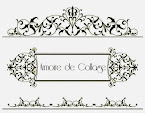
Believed to have been developed in 3500 A.D, the earliest known glass objects
were beads, and were considered a luxury item. They say what goes around, comes
around. The popularity of glass-bead jewelry and Daichroic Glass jewelry,
has spawned a large number of cottage industries, and will once again, have a
huge presence at the show.
Glass making In the United States first began in Jamestown Island,
VA, in the form of windows, and evolved to produce drinking vials and bottles,
but was eclipsed by the Massachusetts settlements of Boston and Cambridge which
produced fine glassware until the Civil War. After the war. the industry
re-emerged in Boston, Connecticut, New York, Pennsylvania and Ohio, to produce
some of the most spectacular glass with ornately cut designs that it was and
will be forever remembered, as the American Brilliant Period, which lasted
from 1876 to 1917.
Aside from the fact that cut glass was expensive and only affordable to the affluent, the industry of approximately 1000 glass cutting shops dissolved because the Lead oxide, an essential ingredient in glass made for cutting, was needed for more military usage in the country’s next major military campaign…The Great War (WWI).
Aside from the fact that cut glass was expensive and only affordable to the affluent, the industry of approximately 1000 glass cutting shops dissolved because the Lead oxide, an essential ingredient in glass made for cutting, was needed for more military usage in the country’s next major military campaign…The Great War (WWI).
Other glass forms emerged, but never of the level
of craftsmanship of the American Brilliant Period cut glass. But because the
glass was not just ornamental, it became and still is, wildly collectible for
its beauty and because it’s utilitarian. Depression glass manufactured during
the Great Depression, and sold at low cost or distributed free as promotional
items, experienced a resurgence in popularity in the 1960s-70s, and remains
highly popular. A higher quality glass referred to as ‘Elegant Glassware of the
Depression Era,’ was sold in the department stores as an alternative to fine
china. It distinguished itself for its clarity and brilliant colors; some of
which was elaborately etched or embellished with gold or silver trim.
Art glass is an art form in and of itself…one of
a kind hand-blown pieces, collected for their artistic design and decorative
qualities. Unlike cut glass of which many pieces were signed, fabulous artisans
will go undistinguished because most of these works of art are not signed.
Definitely a cross-over collectible because it’s prized as much by glass
collectors as it is by the home décor market.
All the above will be on display and available
for sale at the vintage glass show. For those who have eclectic collecting
taste, the show is adjacent to the annual antique show which will feature
everything from A to Z. This is a show with something for everyone, and a
definite must see. Aside from the collectors, it’s a great opportunity for
students of history to see and talk with the antique dealers who not only
participate in the business for their love of antiques, but to preserve our
country’s culture.
The Fort Bend County Fairgrounds are located on US 59 to Hwy 36, ½
mile south of Rosenberg. The show opens Friday, August 16, from 2 p.m. - 7
p.m., and continues Saturday from 10 a.m. - 5 p.m., through Sunday, 11 a.m. - 4
p.m. The $10 admission on Friday, is good for all three days; admission on
Saturday and Sunday is just $6. The air-conditioned venue will have food and
drink concessions, and parking is free. For more information, view the Houston
Glass Club’s website at Houston Glass Club



No comments:
Post a Comment